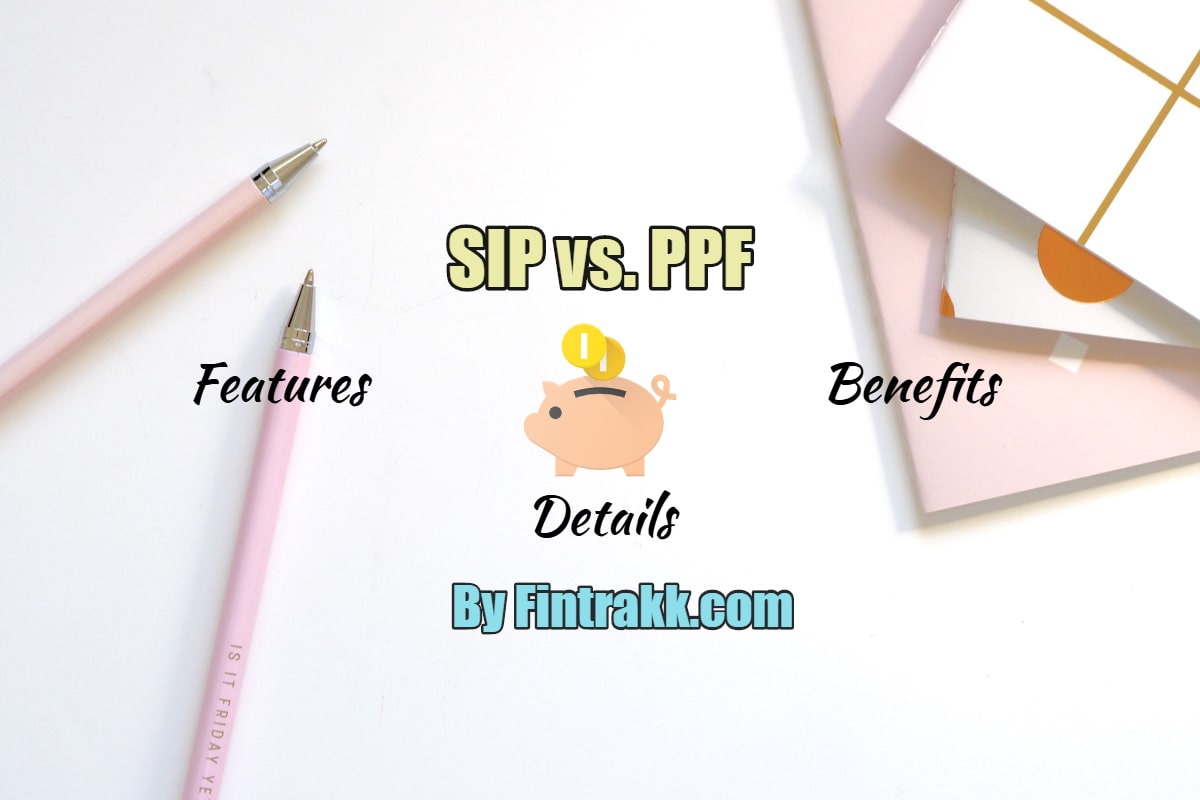Systematic Investment Plan (SIP) is a small and easy plan offered to interested mutual fund investors. SIP scheme is very much similar to recurring deposit scheme wherein an investor invests small amount of money on regular basis. The SIP scheme helps an individual investor to invest under in the Mutual Fund scheme in instalment instead of a lump sum of amount.
Let’s check details on SIP vs PPF, a detailed comparison of these 2 popular long term investment options in India. We shall compare SIP and PPF with regards to various parameters.
SIP or Systematic Investment Plan (SIP):
SIP or Systematic Investment Plan is a scheme brings the benefits of mutual fund to middle class individuals who have a smaller earning capacity and are not able to make huge lump-sum investment at a given time.
PPF or Public Provident Fund:
Public Provident Fund (PPF) Scheme was first launched in 1968. PPF is tax saving which was introduced by the Ministry of Finance (MOF) in India to help individual investors’ to save money as well as claim income tax benefits. The amount invested under the PPF scheme can be claimed as tax deduction under section 80C up to an overall limit of Rs.1.5 lakhs for the year in which investment is made. Also, the interest earned on deposits in the PPF account is not taxable.
The dual tax saving benefit of investment amount as well as interest earned makes the PPF Scheme one of the most tax efficient instruments in India.
PPF is a prominent scheme which encourages smaller earning individuals to invest under this scheme. PPF scheme is risk free and receives interest based on annual rate of return as prescribed by the government from time to time. Also PPF scheme is a very popular retirement savings scheme among Indians.
In current periods majority of the scheduled recognized banks like ICICI, SBI, HDFC and others provide PPF account opening facility to their account holders.
SIP vs PPF: Comparison based on Important parameters
1. Investment Process:
Under SIP: One can invest on regular instalment basis. As such, there is no requirement of lump sum payment. Although, you can invest in lumpsum as well.
Under PPF: Under this scheme the investor has to make annual contribution. The investor can choose either the option to pay the contribution at different intervals or in lump-sum.
2. Tax Benefits:
Under SIP: Based on the scheme opted under SIP, the tax benefit can be allowed or rejected. Various Mutual Fund Schemes are taxed differently based on whether they are Equity or Debt Mutual Funds.
Under PPF: Any amount invested under PPF scheme along with any interest earned on the investment can be claimed as deduction from taxable income up to a limit of Rs.1.5 Lakh under section 80C.
3. Risk:
Under SIP: Systematic investment plan (SIP) is subject to market fluctuations as any other investment scheme. But, SIP plan safeguards an individual from market peaks and drops as the investment amount is spread over the period of time and not accumulated in one go. This investment scheme allows oneself to average out the net impact of market crunches if any.
Under PPF: As PPF is an government investment scheme thus there is no major risk of investment losses under this scheme.
You may also like to read New & Updated PPF Rules
4. Lock In Period:
Under SIP: The lock-in depends on the scheme opted.
Under PPF: The lock-in period for all the funds invested in the PPF scheme is 15 years. But, the investor can continue the scheme for further 5 years without making any further investment.
5. Withdrawal of Investment Scheme:
Under SIP: There are no lock-in period for majority of the schemes and thus amount under SIP mutual funds scheme can be withdrawn easily as decided by the investor. You may incur mutual fund exit load though.
Under PPF: The PPF account cannot be closed before 15 years of period from the date the account was opened. However, the investor, if wishes then he or she can withdraw amount earlier subject to certain conditions.
Note: Withdrawal can be made only under restricted scenario like medical condition , higher education or other reasons as specified by the government.
SIP vs PPF: Conclusion
PPF is low risk–low return investment scheme governed by government policy. Whereas SIP Mutual Fund schemes are high risk–return investment. It’s always better to have a balanced combination of both the investment schemes. You can enjoy a perfect balanced combination of risk-return and liquidity of funds as per your risk profile.
SIP vs PPF: Summary View
| Particulars | Systematic Investment Plan (SIP) | Public Provident Fund (PPF) |
| Tax Benefit | Contribution made under SIP (except when ELSS scheme is opted) is not eligible for tax benefit. | Any amount invested in PPF can be claimed as deduction under Section 80C up to a maximum of Rs.1.5 lakhs. |
| Lock-in Period | None except in ELSS funds. | 15 years |
| Risk | SIP investment plan are subject to market fluctuations. | No major risk of investment losses under this scheme. |
| Withdrawal Policy | The amount under SIP mutual funds scheme can be withdrawn easily as decided by the investor. | PPF account has a lock-in period of 15 years. But the investor can withdraw amount earlier subject to specific conditions. |
Based on individual capacity of risk taking and liquidity crunch, one can opt a preferable ratio of investment and invest in both the schemes.
Hope you understand the major differences between SIP and PPF. Where do you prefer to invest in PPF or SIP in mutual funds? Do share your feedback.

